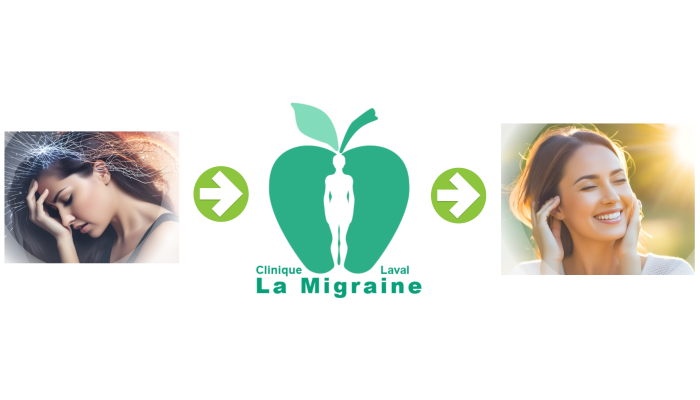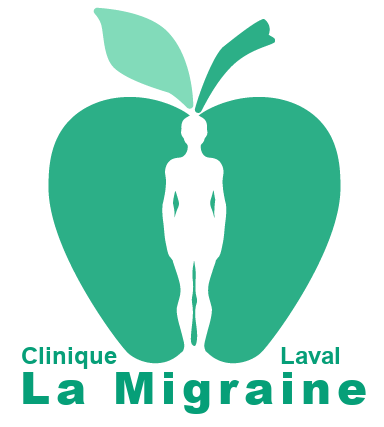Here is a short excerpt from the testimonial of one of our patients who suffered from chronic migraines with aura.
To watch the complete testimonia, please visit our Testimonials page.
We understand exactly what you’re going through: Finally, find relief from your migraines with aura.
Migraine with aura is much more than just a headache. Visual disturbances, numbness, sensitivity to light or sound… These symptoms can disrupt your daily life, and we understand how disorienting and exhausting it can be.
At the Clinic La Migraine, we have dedicated over twenty years to studying and treating various types of migraines, including those with aura. We understand the signs, triggers, and real impact these migraines have on your personal and professional life. And we’re here to offer tangible solutions.
>Tangible Solutions, Proven Results
-
Reduction of over 70% in the intensity, frequency, or duration of episodes in the greater majority of our patients.
-
Personalized approaches tailored to your history and lifestyle.
-
Over 20 years of proven expertise in treating chronic, hormonal, vestibular migraines, and more.
>A team that understands and supports you.
- Attentive listening to your unique situation and needs.
- Treatment plans tailored to your progress, continuously reviewed for optimal effectiveness.
- Compassionate care with Dr. Daniel Lachance, chiropractor, to help you take control of your life again.
>Do not let migraines with aura dictate your days
You deserve to regain serenity and freedom. Contact us today to schedule an appointment and discover how our methods can alleviate your migraines with aura… or even make them disappear.
Contact us now or call 450-689-1223.
Life is too short to spend it in pain. Don’t wait any longer: you have the right to live fully.
Navigating through Classic Migraines
The Frequency in Question
Classic migraines are characterized by specific symptoms, often referred to as “aura”. These symptoms can include visual disturbances, sensory issues, or language disruptions and typically precede the painful phase of the migraine by several tens of minutes. Understanding these distinctive signs can play a crucial role in the management and treatment of classic migraines.
According to Inserm (National Institute of Health and Medical Research, 2020), 20% to 30% of people who suffer from migraines experience migraines with auras. To illustrate the number of individuals affected, according to StatCan (2014), 2.8 million (the population of Toronto) people in Canada suffer from migraines, including approximately 700,000 individuals with migraines with auras (the entire population of the cities of Quebec and Levis combined).
The Symptoms
Classic migraines, often accompanied by auras, are characterized by specific neurological phenomena. These auras manifest as visual disturbances such as scintillating scotomas (bright spots in the field of vision), sensory disturbances like tingling or numbness, as well as language disturbances, such as difficulty speaking. Distinguishing these symptoms is crucial for obtaining an accurate diagnosis.
Migraines are divided into two main categories: migraines with auras (classic migraines) and migraines without auras (common migraines). Within these two categories, subcategories exist based on specific symptoms, thus facilitating the identification and classification of migraines. A concrete example is ocular migraines. This is a migraine with aura, but it must present specific visual auras to be classified in the subcategory of ocular migraines.
Living with Classic Migraines
More than just a medical condition, classic migraines can have a significant impact on daily life. Understanding triggers, mechanisms, and management strategies becomes crucial to minimize the impact of these migraines on quality of life.
How to identify migraines with aura?
To be considered a migraine with aura, according to the ICHD-3 (The International Classification of Headache Disorders), it must have:
>At least two attacks with criterias 2 and 3
>At least one fully reversible symptom of aura (temporary symptoms that resolve):
>>Visual
>>Sensory
>>Speech and/or language
>>Motor
>>Brainstem
>>Retinal
>At least three of the following six features:
>>at least one aura symptom that develops itself progressively over ≥5 minutes
>>two or more aura symptoms occur successively
>>each aura symptom lasts 5-60 minutes
>>at least one aura symptom is unilateral
>>at least one aura symptom is positive
>>the aura is accompanied or followed within 60 minutes by a headache
>No better diagnosis accounted for in the ICHD-3.
To be considered typical migraines with aura, it must have:
>>fully reversible visual*, sensory, language, and/or speech disturbances
>>absence of motor, brainstem, or retinal symptoms
*Visual disturbances encompass any alteration of visual function, such as scintillating scotomas, wavy lines, and color changes, often reversible and related to the aura preceding the migraine. On the other hand, retinal symptoms specifically refer to manifestations related to the retina, such as alterations in central or peripheral vision, linked to issues at the retinal level.
When the aura includes motor deficits, the term to use is hemiplegic migraine.
Prodromal symptoms can begin several hours, or even one to two days before the other manifestations of a migraine attack with aura. They encompass sensations such as fatigue, difficulty concentrating, neck stiffness, sensitivity to light and/or noise, nausea, blurred vision, yawning, and pallor. The term ‘prodrome,’ now used in place of ‘premonitory phase’ or ‘premonitory symptoms,’ excludes the aura. Postdromic symptoms follow the resolution of the headache and can persist for up to 48 hours. Less studied than prodromes, these symptoms typically include fatigue and mood variations, alternating between elevated and depressive states.
Visual aura, present in over 90% of migraine with aura attacks, is often characterized by zigzag fortifications near the fixation point. It may gradually evolve to the right or left, sometimes taking a convex shape with a shimmering angular edge, leaving a scotoma in its wake. In children and adolescents, it may manifest with less typical bilateral visual symptoms.
The second common type of aura involves sensory disturbances such as tingling or numbness slowly moving over a part of the body.
Speech disturbances, although less frequent, are typically aphasic and sometimes challenging to categorize. Studies have revealed that many patients with visual aura may also experience sensory symptoms and speech disturbances. These aura symptoms can occur sequentially in the order of visual, sensory, and then aphasic, but other orders are also possible. Most aura symptoms last for about an hour, although motor symptoms often have a longer duration.
Source for the symptom section: ICHD-3
Contact Form – We accept new patients
We would be delighted to assist you and discuss your migraines. No referral is necessary. Simply fill out this form and submit it, and we will get in touch with you.
You are on the right path to your first consultation and relief from migraines!
or call us:

